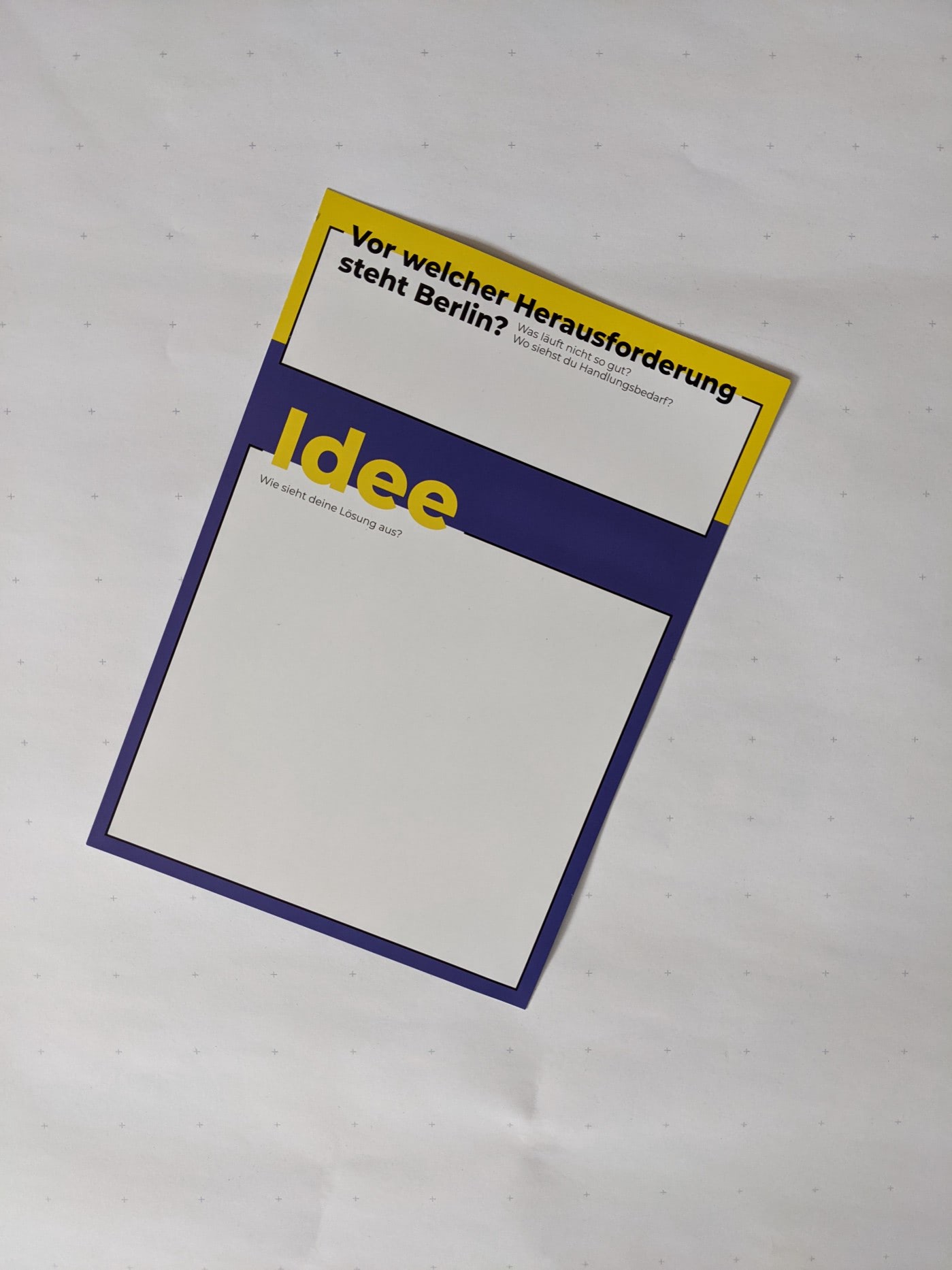“What challenges does Berlin face: What is not going so well? Where do you see a call for action? What is your solution?” This participation question, printed on a sheet of paper, was part of an action box provided on the occasion of Democracy Day on 15 September 2021.
I must confess: my motivation for filling out the sheet was low. Who cares what challenges I spontaneously see for Berlin and what solution I write down for them? All I could quickly think of are things that fall into the category of “quite-clear”. And even if I had a brilliant idea: who would read it, pick it out from the many other filled-in slips of paper and possibly put it into practice? What criteria are used to decide which of the ideas will be taken up in any form? Do those who carry out the participation do so on a whim?
I don’t want to denigrate the campaign “What challenge does Berlin face?” Rather, I would like to use the example to show what could be done right in a participation that starts with an open free-text question.
The question: The question must be chosen in a way that participants can answer it without much effort. At the same time, they should feel that their answer can make a difference in some way. This could be the case if their idea is so sparkling that it is not unlikely that it will be heard. Or because as a participant, you can expect to join a chorus of like-minded people who are working together to get a cause heard.
Transparency of results: As a participant, I expect that the results of a participation process are publicly visible. It is of little help here if all the submitted ideas are published as a long list. It is more interesting if the participants’ contributions are thematically organised into groups and subgroups. With the help of such an order and finding system, transparency from a practical point of view on which topics have been addressed and which proposals have been submitted is also ensured.
Decision orientation: A participation process should be clearly oriented towards a decision. From the point of view of those involved, it is not a very satisfactory solution for decision-makers to select individual ideas as they see fit. A better solution would be for the decision-makers to commit themselves to at least making a statement on the proposals submitted: “We’ll do it!”. Or: “We already have!” Or: “We can’t do it because …”.
Within a participation process, comparatively small design features make it possible to meet these points. But these make a difference in the bigger picture. Just asking for ideas: that’s a survey. A one-way street. With the additional design features, it becomes participation. And most people, I would argue, would rather partake in a participation than a survey.

